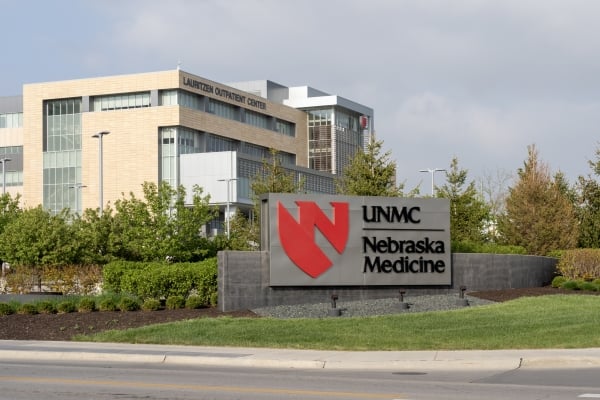Recent executive actions by President Trump, most notably a blanket freeze of federal grants and loans, sent chills through higher education. Even though the full funding stoppage was quickly rescinded and subjected to legal challenges, universities probably will continue to face partial pauses on federal funding, as well as questions over the impact of other recent executive actions, like ones aimed at DEI.
While consequential for all of higher education, pending and potential moves by the Trump administration that implicate funding could especially affect what has become an increasingly dominant aspect of multiple universities in terms of budgets and focus—academic medical centers (AMCs). AMCs are major funding recipients from the National Institutes of Health, the National Science Foundation and other federal agencies. AMCs and their health enterprises also are deeply connected to patient care programs like Medicare and Medicaid.
For some higher education institutions, AMCs have come to play a central role in campus life and identity, especially as more AMCs have expanded to become full-fledged health systems. While some raise concerns and others celebrate this trend, the fact remains that some research universities are increasingly shaped by their AMCs. Using our own institution, the University of Kentucky, as one example, its health-care enterprises now account for around $5 billion of an $8.4 billion budget.
Media outlets covered the “confusion and chaos” that beset university presidents, medical center vice presidents, deans and researchers after the initial federal funding freeze. Now that the freeze has been temporarily rescinded, leaders of academic medical centers should move beyond confusion and chaos to focus on public presentations that emphasize their competence, compliance and cooperation with federal reviews. Now is an opportune time to pick up on President Trump’s recent emphasis on “merit” as the key to gaining federal support. University academic medical centers are well positioned to demonstrate and document their case.
To showcase “merit,” for example, a university academic medical center could cite ratings and commentaries about its successful NIH grant proposals, illustrating the talent and competitive advantages of its principal investigators and research teams. And they should emphasize that the NIH-funded research projects are not isolated: They are inseparable from a cooperative network within university health centers and hospitals. Evaluating these complex applied research alliances helps answer external questions about efficiency, effectiveness and significance of projects. The same kinds of questions are continually monitored in analysis of existing and new university degree programs for the education of medical doctors, nurses, physician assistants, pharmacists, medical technicians and health-care administrators. In addition to evaluating the training and preparation of researchers and health-care practitioners, an AMC pays systematic attention to accountability and responsibility for patient care and treatment as part of its daily and annual operations. These stories need to be told.
There are other sources that can be used to document AMC merit and performance. One can look at accreditation reports, specialized degree program reviews and financial balance sheets for the mosaic of health services and programs that are housed under the umbrella of an academic medical center. Institutional data can show that an academic medical center that aligns colleges of medicine and health care with such disciplines as biochemistry, physiology, bioengineering and statistics has evolved into a dynamic institution in which practice and advanced research are intertwined with providing professional services within a community.
A few summary statistics indicate this presence. The top 20 university AMCs each brought in more than $400 million in NIH research grants in fiscal year 2023. Within this group, Johns Hopkins University is first, with $843 million, followed by the University of California, San Francisco, with $789 million, and in third place, the University of Pennsylvania with $703 million. These are the peak of a cluster of 220 university medical centers in which academic programs such as the college of medicine partner with university medical foundations.
The fusion represents a new academic model in which the medical and health programs typically constitute about 60 percent or more of the total university budget. At universities with this structure, the AMC typically is home to a majority of the university faculty positions and student enrollments. The AMC also becomes a major economic force and employer in metropolitan areas and regional communities.
The academic health and medical complexes are economic engines. They often are the largest employer in the metropolitan area or even in the state, such as is the case for the University of Alabama at Birmingham and its health system. Universities in this category are the major provider of health services to large constituencies of patients. This academic health organization includes partnerships with Medicare, Medicaid and private insurance companies. Federal grants for research and service to the university often stimulate state financial support in terms of program grants and capital funding from state legislatures and governors and major gifts from foundations and private donors.
The message for “merit” is that these universities represent a new type of American organization—what might be termed the academic health business model. An abundance of quantitative and qualitative data makes external evaluation and detailed analysis of accountability possible. Sound policy evaluation from several constituencies—the executive branch, Congress, federal and state agencies, university leaders, and patient advocacy groups—calls for thoughtful, informed analysis to review and perhaps renew what has evolved as a distinctive academic enterprise.
A lively dialogue about the promises and benefits of AMCs that includes consideration of recent executive actions and potential future decisions, such as funding levels for Medicaid, is timely. The events of the last two weeks provide a much-needed moment for academic constituencies to reflect on what the expansion of AMCs means for individual research universities and higher education broadly in the future. If a funding freeze causes a chill for AMCs and their health enterprises, does the rest of the campus catch a cold, or even worse?
Recent presidential actions from Washington, D.C., have highlighted how much the budgets and identities of some research universities are more and more defined by their AMCs. In addition to helping AMCs continue to sustain and enhance their vital missions, all higher education groups need to contemplate the implications for universities whose mission and purposes are increasingly characterized and shaped by their academic medical centers.
John R. Thelin is University Research Professor Emeritus at the University of Kentucky. He is the author of several books on the history of higher education.
Neal H. Hutchens is a professor in the Department of Educational Policy Studies and Evaluation at the University of Kentucky. His research focuses on the intersection of higher education law, policy and practice.








